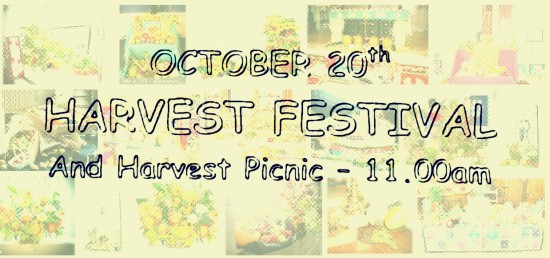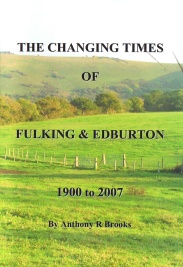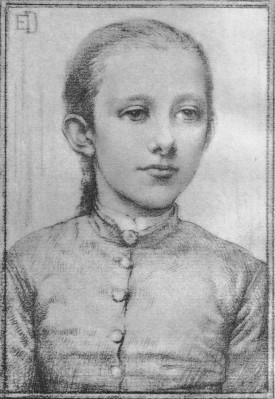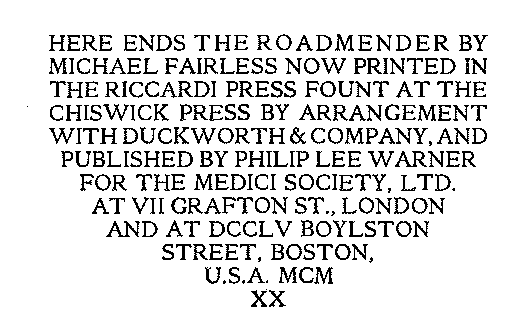To the Glory of God and in memory of the men of this parish who laid down their lives in the great war: James Baker, Samuel Baker, Charles E. Sheppard, William Baker, Charles Baldey, Arthur W. Brown, James E. Lucas, Elias Luff, Richard Wearn.
Category Archives: St. Andrew’s
Quiz supporting St Andrew’s Church, Edburton
 Why not put a team together and come along to our quiz night. (Teams will be made up of four people)
Why not put a team together and come along to our quiz night. (Teams will be made up of four people)
When: Friday 29th November 2013
Where:
Preston Nomads Cricket Ground
Fulking BN5 9NH
at 7.00pm for 7.30pm
Why: it’s an evening held in support of St Andrew’s Church at Edburton
How much: Tickets £7 per person including a Ploughman’s Platter
Who do I call: Ring Jane Warne on 01273-857322 or 07812-465-559 to Enter
With a bar and a raffle.
Event was sold out last year so book early!
Supporting St Andrew’s Church, Edburton
Fulking book benefits Church
I would like to update all those who sponsored or purchased my book [Anthony R. Brooks (2008) The Changing Times of Fulking & Edburton. Chichester: RPM Print & Design] how the proceeds of £3,800 have been spent by the Church.
Originally it was earmarked for a new door to be added to the church entrance. After much thought the PCC decided that as the Church is used during the winter months twice a month for a maximum of two hours, money spent on a new door would not be cost effective. So a compromise was agreed:
- A warm air unit would be fitted over the church door inside.
- The entrance path to the church has been reshaped to include a patio to give more standing area.
I am pleased to say both projects are now complete.
[from Pigeon Post, August 2013]
Residential continuity in the nineteenth century

If you wander around the churchyard at St. Andrew’s peering at graves, you will soon get the impression that certain families persisted in the parish over several generations. But many of the older graves are hard to read and some are missing altogether. To get a more accurate sense of how many residents had parents who also lived in the parish, we need to turn to the nineteenth century census returns. The first ‘modern’ census, in 1841, only asked respondents if they had been born in the county in which they were then living. But the 1851 and subsequent censuses asked for both the county and the parish of birth. These later censuses thus permit a rather fine-grained analysis of the relation between where people were living and where they were born.
| Year | EdFulk | AdjPar | ElsSus | OutSus | Total |
| 1851 | 57% | 14% | 26% | 3% | 288 |
| 1861 | 41% | 18% | 34% | 6% | 299 |
| 1871 | 41% | 11% | 38% | 10% | 300 |
| 1881 | 41% | 11% | 39% | 8% | 340 |
| 1891 | 39% | 9% | 38% | 14% | 358 |
Where were the residents of the parish born?
The first row is perhaps the most striking. In 1851, over 70% of the residents of the parish were living within easy walking distance of where they were born (i.e., in Edburton or Fulking or one of the immediately adjacent parishes) and only 3% had been born outside Sussex. By the last decade of the century, the corresponding figures were 48% and 14%, respectively, and the size of the local population had increased by nearly 25%.
The remaining four rows are notable more for their similarity each with the next than for any radical changes. As the total population increases, the proportion of residents born in the parish remains more or less constant, as does the proportion born in Sussex but outside the immediate area (ElsSus). The proportion born in the immediately adjacent parishes halves over the 1861-1891 period whilst the proportion born outside Sussex more than doubles.
The first table provides a good sense of where the population had come from in any given census year but it does not give us a sense of the family structure of the parish. To get that, we need to look at the way the main resident families[2] persisted over time:
| Family | 1841 | 1851 | 1861 | 1871 | 1881 | 1891 |
| Barber | 22 | 13 | 13 | 14 | 3 | 0 |
| Baird/Beard | 3 | 4 | 4 | 3 | 12 | 15 |
| Burtenshaw | 15 | 5 | 11 | 10 | 10 | 6 |
| Cousins/Cozens | 4 | 2 | 10 | 11 | 3 | 1 |
| Jackson | 5 | 7 | 5 | 2 | 7 | 0 |
| Lelliot/Lelliott | 10 | 12 | 20 | 4 | 10 | 0 |
| Madgwick | 0 | 3 | 4 | 2 | 2 | 1 |
| Marchant | 10 | 11 | 1 | 4 | 2 | 3 |
| Morley | 8 | 8 | 7 | 8 | 16 | 9 |
| Page | 1 | 1 | 7 | 18 | 10 | 9 |
| Paine/Payne | 40 | 40 | 27 | 10 | 6 | 10 |
| Pollard | 5 | 6 | 2 | 6 | 8 | 5 |
| Sayers | 3 | 4 | 5 | 3 | 7 | 15 |
| Steel/Steele | 16 | 29 | 14 | 13 | 14 | 13 |
| Stevens | 7 | 11 | 10 | 11 | 13 | 7 |
| Stoveld/Stovell | 5 | 9 | 9 | 4 | 3 | 7 |
| Strevens/Strivens | 12 | 14 | 13 | 8 | 11 | 14 |
| Willet/Willett | 10 | 7 | 8 | 13 | 5 | 5 |
Families resident in the parish for five contiguous censuses
Footnotes
[1] A couple of rows sum to 99% rather than 100% as a consequence of rounding.
[2] Family members are defined here by surname, not genetics. If Jane Paine marries Bert Burtenshaw and remains in the parish then she will be counted as a Burtenshaw, not as a Paine, in the following census. Where the census takers used alternant spellings for a surname, both are listed in the table.
References
- Marion Woolgar (1995) Census transcriptions and surname index for Edburton & Fulking. Published by the Sussex Family History Group.
Fulking Book Nook now open

FULKING CHAPEL VILLAGE LIBRARY
THE FULKING BOOK NOOK
NOW OPEN
Books – Games – Toys – CDs – DVDs – Cassettes
Wednesdays – 10.00-11.30am
Saturdays – 11.30-2.30pm (note the new opening times from May 10th 2014)
THE CHAPEL, THE STREET, FULKING
Contact: Jane Warne for details on 07812-465559
Supporting St Andrew’s Church, Edburton
The Roadmender Myth
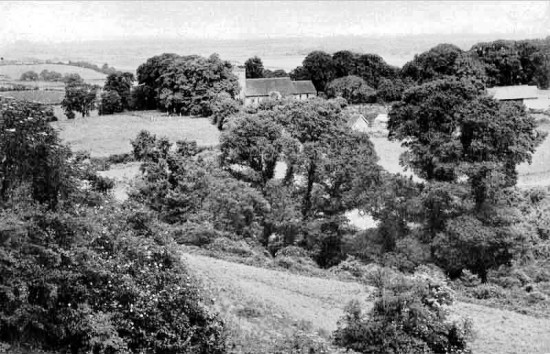
“The little church at the foot of the grey-green down”, or so runs the title of this photograph of St. Andrew’s, Edburton in a 1922 edition of The Roadmender. But was it?
Although The Roadmender is suffused with a sense of location it is, more often than not, inexplicit as to exactly which locations the author had in mind [1]. But readers, reviewers, book illustrators and authors of travel guides are curious about such matters. They had to wait ten years even to discover who the author was. That information was released in 1912 by her literary executor, against the author’s express wish, as an antidote to the misinformed speculation that had developed around the book. One reference in the book was unambiguous even before her identity became known — from the house in Shermanbury she reports hearing the bells of “the monastery where the Bedesmen of St. Hugh watch and pray” (page 44). Other references, to the Thames and the Downs are less specific. Books with titles like The Roadmender Country (Lorma Leigh, 1922) and The Roadmender’s Country (George Bramwell Evens, 1924) were published to sate the geographical curiosity of her readers some two decades after the book that inspired them was originally published.

The location that concerns this post is the subject of the following passage:
On Sundays my feet take ever the same way. First my temple service, and then five miles tramp over the tender, dewy fields, with their ineffable earthy smell, until I reach the little church at the foot of the grey-green down. Here, every Sunday, a young priest from a neighbouring village says Mass for the tiny hamlet, where all are very old or very young — for the heyday of life has no part under the long shadow of the hills, but is away at sea or in service. There is a beautiful seemliness in the extreme youth of the priest who serves these aged children of God. He bends to communicate them with the reverent tenderness of a son, and reads with the careful intonation of far-seeing love. To the old people he is the son of their old age, God-sent to guide their tottering footsteps along the highway of foolish wayfarers; and he, with his youth and strength, wishes no better task. Service ended, we greet each other friendly — for men should not be strange in the acre of God; and I pass through the little hamlet and out and up on the grey down beyond. Here, at the last gate, I pause for breakfast; and then up and on with quickening pulse, and evergreen memory of the weary war-worn Greeks who broke rank to greet the great blue Mother-way that led to home. I stand on the summit hatless, the wind in my hair, the smack of salt on my cheek, all round me rolling stretches of cloud-shadowed down, no sound but the shrill mourn of the peewit and the gathering of the sea. [The Roadmender, pages 10-11]
Over the last hundred years, it has been widely assumed, by those who have had occasion to care about such matters, that “the little church at the foot of the grey-green down” is St. Andrew’s at Edburton. Writing in the Observer in 1921, Arthur Anderson made the claim explicitly. Such was also clearly the working assumption of Will F. Taylor, the photographer who did the illustrations for a 1922 US edition published by E.P. Dutton and whose image of St. Andrew’s can be seen at the top of this post. In the 1950s F.A. Howe, who lived right next door to St. Andrew’s, reported that devotees of the book would occasionally turn up at the church. The 1999 edition of Tony Wales’s survey of West Sussex villages provides a modern example and is quite explicit: “St. Andrew .. is the little grey church in Michael Fairless’s strange Sussex book” (page 90).
As Howe notes, Anderson was to withdraw his claim just three years after he originally made it:
When I wrote my Observer articles, I hazarded the suggestion that this little church could be no other than Edburton, which fits, and alone fits, the geographical conditions, but I have learned since that though Michael Fairless had in mind an actual church it was one in another English county, far from Sussex. My suggestion has, however, not only been adopted by others; it has been expanded into an assertion that Michael Fairless herself often kneeled before the altar here [2]. For this statement there will henceforth be no warrant, though I daresay the suggestion, once having been made, will still be repeated and to Edburton will still be attributed this association. [Quoted by Howe 1958, page 61.]
Anderson is probably incorrect in taking full responsibility for the original claim — others surely made the same inference that he had. But his pessimism about ever getting it corrected it was clearly appropriate. The myth lives on.
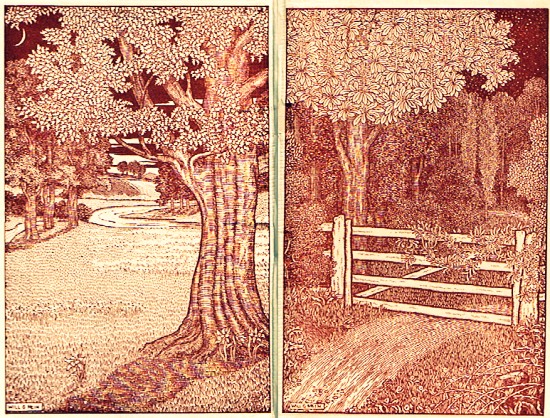
The White Gate, an etching by Will G. Mein from the endpapers of Scott Palmer & Haggard 1913. This was a real gate, visible from MB’s room in Mockbridge House. MB used it as a symbol of the point of transition from life on earth to “a land from which there is no return” (page 158).
Footnotes
[1] Likewise, the book rarely names contemporary figures. But MB makes an exception for John Ruskin who had died at exactly the point that she had begun writing The Roadmender. She seems to have had no fear about encountering him in the hereafter:
John Ruskin scolded and fought and did yeoman service, somewhat hindered by his over-good conceit of himself. [The Roadmender, page 139]
[2] And, of course, MB’s grave is not to be found in the churchyard at St. Andrew’s, Edburton. There is no reason for it to be there. It was her wish that she be buried at St. Giles, Shermanbury but the old churchyard was closed for interments at the time of her death (The Landmark VI.1, 1924, page 602). Instead, her grave is to be found at St. James, Ashurst.
References
- Alan Barwick (2013) “Notes for The Roadmender talk”. Henfield Museum: manuscript. [This paper is the single best source for the biographical details of MB’s brief life and is based, in part, on a recent bequest of documents to the museum. The illustrated talk itself includes a remarkable collection of modern and historical images that document aspects of that life.]
- Michael Fairless (1902) The Roadmender. London: Duckworth. [As noted in the text above, the book remains readily available. You can also download it as a PDF file, or read it on the web.]
- F.A. Howe (1958) A Chronicle of Edburton and Fulking in the County of Sussex. Crawley: Hubners Ltd, page 61. [Howe’s single paragraph on this topic inspired the present post — which also borrows the section title he used in his contents list.]
- W. Scott Palmer & A.M. Haggard (1913) Michael Fairless: Her Life and Writings. London: Duckworth (PDF). [The first author was MB’s close friend and literary executor, Mary Dowson, and the second was MB’s eldest sister. The book includes two portraits of MB by Elinor Dowson, both reproduced above. MB was known as Marjorie Dowson for the final few years of her life.]
- Tony Wales (1999) The West Sussex Village Book. Newbury: Countryside Books, page 90.
Currently popular local history posts:


